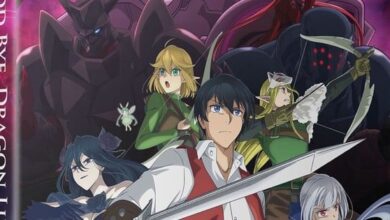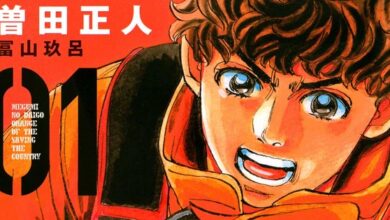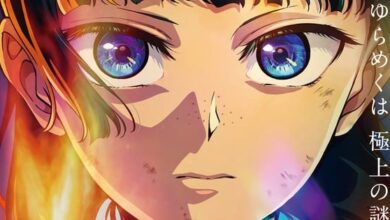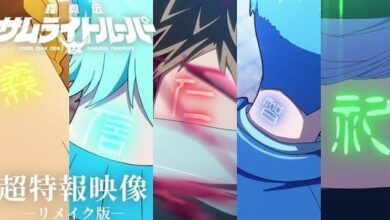Persona5: The Phantom X Game Review – Game Review
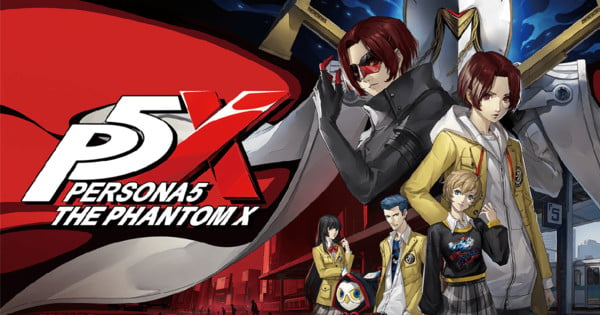
© Perfect World Adapted from Persona5 ©ATLUS. ©SEGA.
Love them or hate them, games featuring prominent gacha mechanics are big business. While initially more the domain of mobile platforms, we’ve moved on technologically since the heady days of (decade old!) Fate/Grand Order‘s one billion US dollar annual earnings reports. Ever since Genshin Impact exploded onto the scene five years ago, inspiring copycats like Honkai Star Rail and Tower of Fantasy, big budget, glossy, sprawling console-like adventures released across myriad formats, PC, mobile, and console, have been the order of the day.
I’m no stranger to gacha games, having played an embarrassing number of them over the years, even sticking with a few for a prolonged duration. My true passion lies with console RPGs like the Shin Megami Tensei (SMT) series, however, and the related Persona 5 ranks up there as one of my top games of all time. The prospect of a free-to-play entry in the franchise was so tempting that last year I even attempted to play the initial Chinese/South Korean release of Persona5:: The Phantom X (P5X) with the use of a hilariously wonky machine translation patch. It did not go well. Finally, after almost fifteen months, SEGA (owner of SMT developers Atlus) have released the game, properly localized in intelligible English, for international players to enjoy.
Was it worth the wait? The answer to that is… complicated.
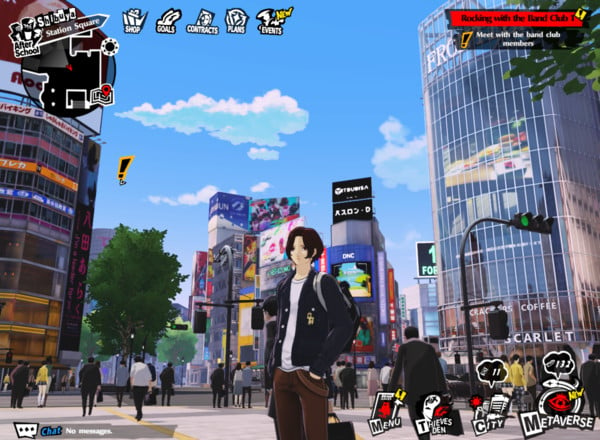
© Perfect World Adapted from Persona5 ©ATLUS. ©SEGA.
Let’s get the worst of the negativity out of the way. This is a game optimized for touch-screen control, and the gamepad support for the PC version is abysmal to the point where I repeatedly screamed in frustration at the buttons’ utterly infuriating unresponsiveness when attempting to navigate the multiple layers of absolutely horrid menu screens. Persona is a franchise that somehow managed to elevate the simple menu to a heavenly art form, yet this game drowns in the most egregiously over-complicated, human being-hating user interface ever devised. Touchscreen navigation is only marginally better; nothing can save the game from its presumably intentionally confuddling and bitty icon navigation experience, which borders on torture contravening the Geneva Convention. I’ve lost count of the number of times I’ve wanted to do something simple like, I don’t know, spend a certain currency, or find a place on the map, and pulled my hair out in abject frustration that I couldn’t find the menu option to do so.
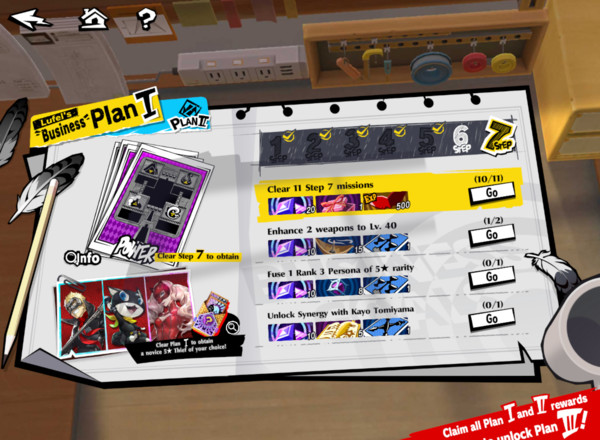
© Perfect World Adapted from Persona5 ©ATLUS. ©SEGA.
JRPGs like Persona often feature quite complex mechanics and systems that take a while for the player to grasp, it comes with the territory. P5X and its literally dozens of in-game currencies and almost equal number of stores (not all of which are – maddeningly –accessible from the same icon) make Persona 5 Royal look like a pre-schooler’s first board game in comparison. Like in P5, the main player character collects “personas,” essentially demonic/existential Pokémon, with which to battle enemies in turn-based battles. Normally, you’d expect the equipped personas to gain EXP with battles? Uh, no. P5X over-complicates, with almost impressively insane granularity, everything relating to leveling up or strengthening characters. It’s all about the currency, man. Some currencies are used as EXP, others can be used to buy EXP items. EXP items can be farmed from certain stages using Stamina points. There are separate EXP items and currencies for persona-users, for their weapons, and for individual skills, and then later on, yet more equippable things are added, with their own items and hideously complex mechanics. I get that the fiddliness of this kind of typical gacha game character building is a draw for some, but here it smacks of the developer introducing intentional delay and disorientation in order to entice gamers to pay to skip the inconvenience of leveling characters.
There are so many interlocking systems, so many menu screens and currencies, it’s a full time job keeping track of everything, and the game loves to notify you that somewhere, there’s a little tweak you can make to one of your characters/personas/weapons/outfits etc. Those tiny little yellow exclamation marks that spread like a measles rash across every icon are the bane of my life, as it’s not always obvious what they relate to, and they don’t always disappear when expected, either. Some exclamation marks never disappear because they’re cynically linked to real money spending options. Oh, and good luck navigating all of the exclamation marks with a gamepad. The buttons you need to press seem to change at random with every menu layer. And good luck getting the game to register button presses.
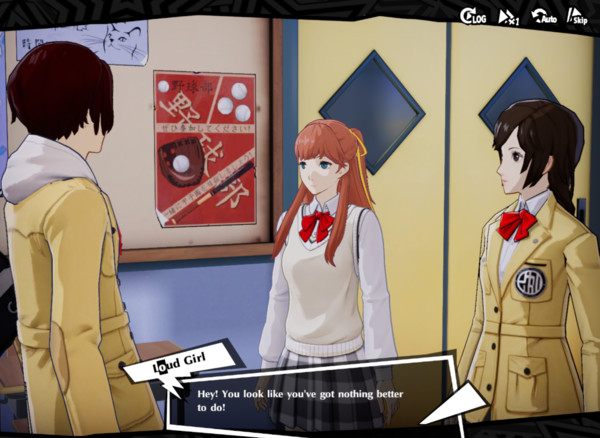
© Perfect World Adapted from Persona5 ©ATLUS. ©SEGA.
Frustratingly, the iOS experience is at times even worse, because of the egregiously frequent random crashes. I’ve been playing on an iPad Air 3, which I admit isn’t the springiest of spring chickens when it comes to iPads, but the game seems to run just fine… until it doesn’t. There’s no warning, no pattern, I can barely play for 20 minutes without the game deciding to exit to home screen, no matter if I’m wandering through Shibuya, chatting with a friend, or interacting with an in-game store. As progress is stored on a remote server, it means no significant progress is lost, but constantly restarting is a
royal pain. I’ve heard from friends with other mobile devices that this crashing issue is not limited to my device, either.
My final gripe is in regards to the story. It’s complete and utter unripe, chewy ass. P5’s first antagonist was Kamoshida, a school PE teacher and bully, whose comeuppance was cathartic. P5X’s first antagonist is failed baseball professional Kiuchi, “The Subway Slammer.” You may already have seen the memes. He’s the most pathetic, laughable excuse for a Persona game enemy I’ve ever seen, and the game’s entire first “palace” (dungeon) revolves around his contrived, almost offensively dumb story. The second palace’s boss isn’t a whole lot better either. Apparently, the writer of these first two arcs has since left the game’s development, and I hear subsequent palaces and associated stories improved with better writers in the Chinese version. For the moment, though, only the first and second palaces are included in this initial worldwide release. That the story is so awful is disappointing – I found the original Persona 5‘s story to be particularly resonant and engaging, so this is an unbelievably disappointing downgrade so far.
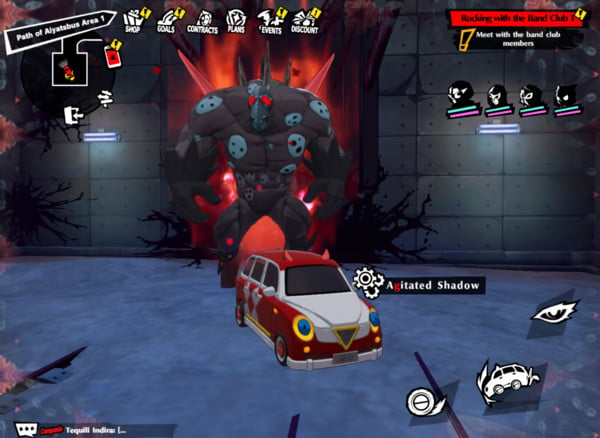
© Perfect World Adapted from Persona5 ©ATLUS. ©SEGA.
Could that be enough negativity for now? Perhaps, though by the end of my recent weekend-long binge of this game, my son expressed concern that I looked “defeated and unwell.” That’s probably just what playing a gacha game non-stop for twenty hours does to a person. There’s certainly plenty of content for players to get their teeth into, from Palace
conquering, to Mementos trips, exploration of Tokyo and its myriad stores, meeting up with friends, part-time working, following side quests, and expending stamina in order to grind items. Boredom certainly isn’t an issue. There’s almost too much to do, and it’s hard to know what to focus on or where to go next.
The palaces are enormous, but that’s because they contain vast swathes of optional content for treasure-hungry persona-users. Unlike in earlier games, palaces can be re-visited after defeating their boss, so that removes the stress of time-limited completionism. In general, P5X is much more relaxed time-wise than P5, though that does remove some
of the charm. The characters aren’t working together to fight a deadline, there’s little sense of urgency. The flipside of this is that the player is granted an almost unprecedented level of freedom. While there is, like most gacha games, a stamina point system that gradually replenishes with time, it’s used only for item grinding, or social stat leveling. It doesn’t
impact city exploration, or Palace/Mementos crawling. Stamina replenishment items are available – especially to paying customers – which means that the main character’s level is time-gated, though this can be accelerated with the use of real money, for the impatient. Completion of the first palace is gated behind player level 30, which limits free-to-play players to at least four real-time days of almost constant play before meeting the requirements.
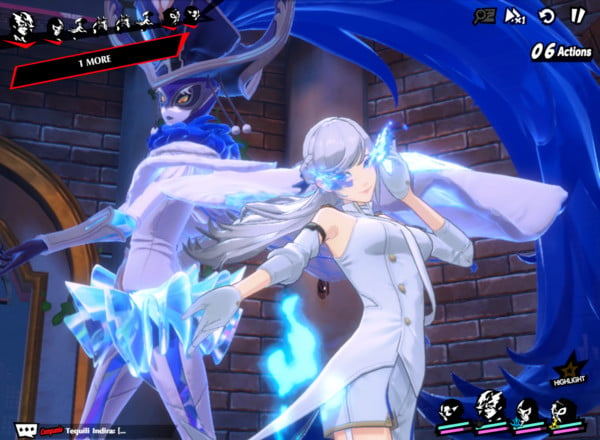
© Perfect World Adapted from Persona5 ©ATLUS. ©SEGA.
Opening treasure chests, speaking with friends, defeating enemies, exploring the world, and completing the usual daily/weekly targets generates large quantities of the games’ stupidly huge number of currencies, some of which can be used to summon new characters from the gacha. New players are guaranteed a non-limited 5-star SSR character of their choice after 50 pulls on a special banner, after that there’s a guaranteed SSR every 80 pulls on the remaining two banners. Gacha pulls are divided between premium currency and common currency, and limited SSR characters like P5’s Joker can
be summoned only with premium currency (which can be earned in-game without payment). Every 10-pull comes with a guaranteed 4-star SR character, and I expect the majority of free-to-play players will, at the beginning, rely heavily on these. It’s relatively easy to pull duplicates and thereby strengthen them.
As is common to every Persona game, the turn-based battle system relies on your team of four persona-users exploiting enemy weaknesses, while avoiding the enemy exploitation of your own. Hitting an enemy’s weakness knocks them down, and triggers a “baton pass,” allowing the chaining of attacks from other allies without expending a turn icon, though the player has less control over the nature of these than in P5. A special power gauge builds up in the background, too, enabling powerful character-specific moves. Knocking down every enemy allows for an “all-out attack” where your allies pile onto the vulnerable enemies in a cartoonish orgy of violence. Enemies and allies alike can generate shields against being knocked down, especially bosses, increasing the difficulty of some fights. In general, enemies tend to be damage sponges, with bosses sometimes taking a long time to fell. SP is far more plentiful here than is usual for Persona, with Safe Rooms in both Palaces and Mementos fully replenishing characters’ HP and SP. Otherwise, the battle mechanics are all quite familiar to Persona game veterans, though with enough changes to give the game its own identity and change up default strategies.
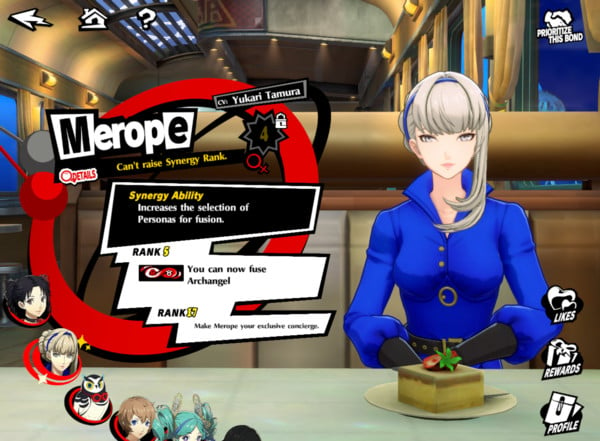
© Perfect World Adapted from Persona5 ©ATLUS. ©SEGA.
Protagonist Nagisa Kamishiro (code name “Wonder”) has the “wild card” ability, which allows him to use multiple personas, and depending on which he has equipped, it alters his stats and skills. Personas can be gained from gacha pulls, randomly in battle, from grinding using stamina, buying spares from the cognitive store, or from fusion in the Velvet
Room. Instead of fusing actual personas together, new personas are made from combining items obtained from duplicate personas, so that you never lose any personas to fusion. It’s a much more complicated system than mainline Persona games, and the intricacies are much harder to grasp, while paradoxically limiting the freedom of skill transfer between different personas. Progression to more powerful personas is much more tightly regulated here. To begin with, Wonder can only equip two measly personas at a time, though this increases to three at level 30.
Fighting alongside Wonder are either his two schoolfriends, who also awaken to their personas, and Lufel, the requisite mascot character who is essentially P5’s Morgana, but as an owl instead of a cat. His backstory is identical to Morgana’s, even to the point he has amnesia. I can’t tell if this is deliberate homage, creatively redundant plagiarism, or something set up for a cleverly meta twist later on. There have been a few hints that something weird is going on with the protagonist and his ability to glimpse alternate futures, and it seems the Persona series is now a multiverse. P5X re-uses as many P5 assets as it can, and this includes places like Shibuya and Yongen-Jaya, even down to Cafe Leblanc (via an event). Sadly, this doesn’t mean the original Phantom Thieves are running around – although they do appear, it’s only either as potentially non-canon event stories, or as summonable “Phantom Idols.”
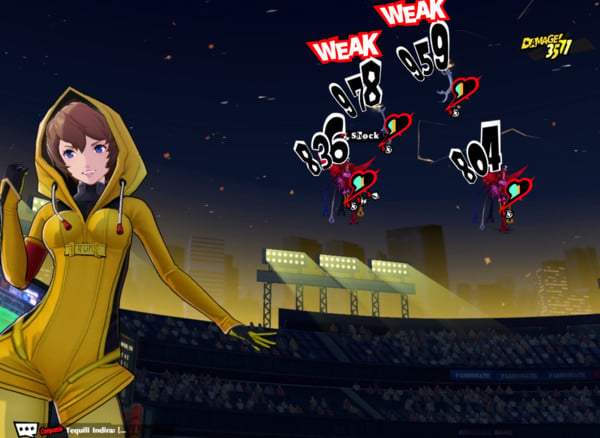
© Perfect World Adapted from Persona5 ©ATLUS. ©SEGA.
Phantom Idols are the aforementioned SR and SSR summons, these are essentially cognitive clones of persona-users, not the originals. So when Wonder fights alongside Joker, Panther, Skull, or Mona, it’s not their real versions, which is a little sad. There are also plenty of new Phantom Idol persona-user characters who seem mainly to be random place-fillers. We don’t get to know who they are, where they’ve come from, or really anything about them. Their designs are mostly pretty cool, but I feel no emotional connection to them. They exist to fill out the mandatory expansive gacha game roster.
At least the new main characters are all well-fleshed out, from sporty girl Motoha, to serious, intense Kano. With character designs from series mainstay Shigenori Soejima, they look great. Even some of the non-combatant characters the player meets in side quests are fun. Thankfully some P5 mainstays return, like fortune-teller Chihaya Mifune and hot goth lady doctor Tae Takemi. (I’m very happy, I love a good goth lady doctor, especially one who supplies me with powerful substances of dubiously legal status.)
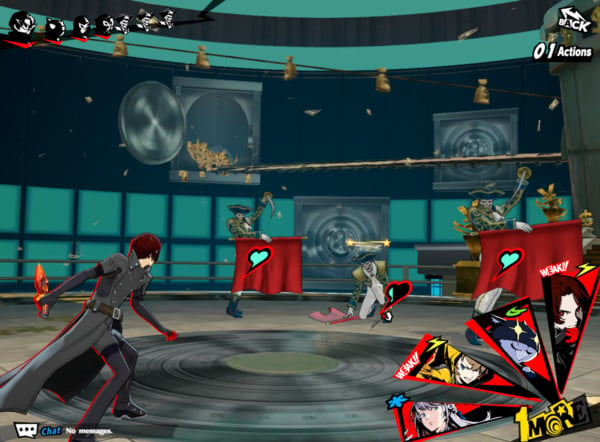
© Perfect World Adapted from Persona5 ©ATLUS. ©SEGA.
In terms of graphics and world design, P5X looks almost exactly like P5 did on PS4, mainly because of the asset re-use. It’s kind of comforting to come back to a world I’ve already spent literally hundreds of hours in already, to see it from a slightly different perspective. P5’s amazing soundtrack makes a big return, though while there are a few new tunes, the game relies heavily on old favorites. I’m a huge fan of the P5 soundtrack, so this is a bonus! The iconic designs of the individual personas closely echo their appearance in the SMT/Persona series, which also adds to the pervasive feeling of
familiarity. It’s a shame that’s marred by the terrible design elements, stupendously frustrating controls, and unforgivably frequent performance issues.
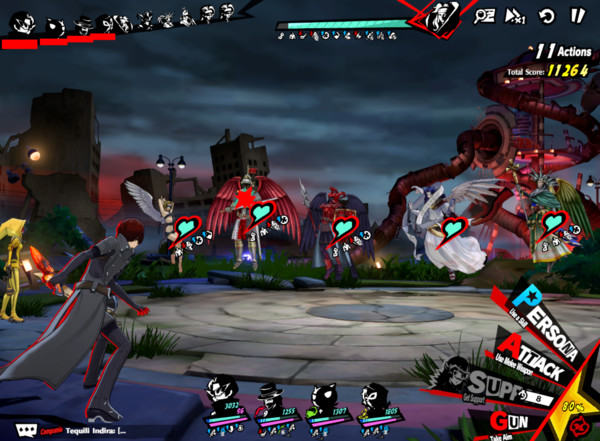
© Perfect World Adapted from Persona5 ©ATLUS. ©SEGA.
I’ve spent a week with P5X, reached player level 40, battled part of the way into the second palace, and had my ass handed to me by Matador (as is SMT tradition), and I’m still unsure if I’m in for the long haul with this game or not. My gacha luck has been… uh…absent, but I refuse to waste my time re-rolling. Part of the “fun” of gacha gaming is
making do with what RNG gives you, yet somehow succeeding anyway. I’m having a good enough time with the battle system and Palace/Mementos exploration that I’m almost willing to endure the UI-induced existential pain. I don’t feel I can give the game my wholehearted recommendation, but it’s definitely one of the better gacha games I’ve experienced over the years. Perhaps spending real money to remove some of the deliberately-induced frustrations might mitigate some of my criticisms, but I’m not terribly convinced…

